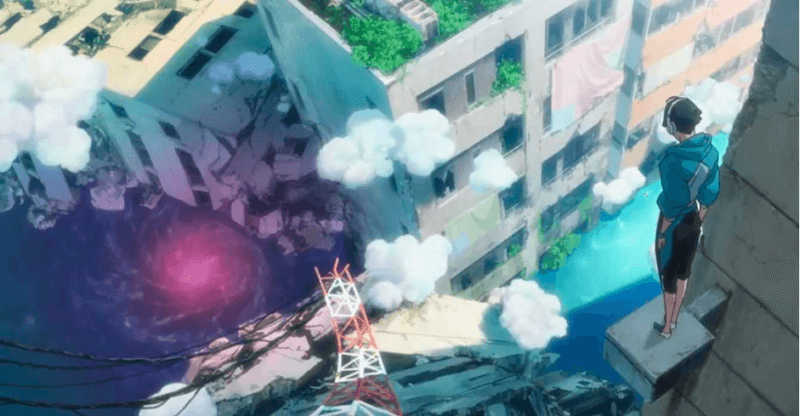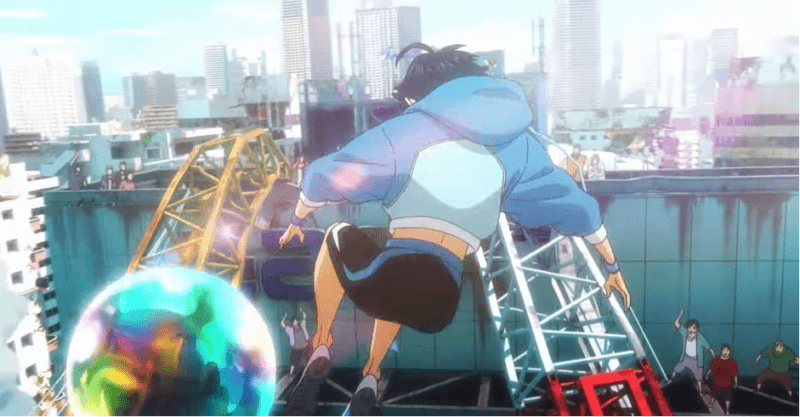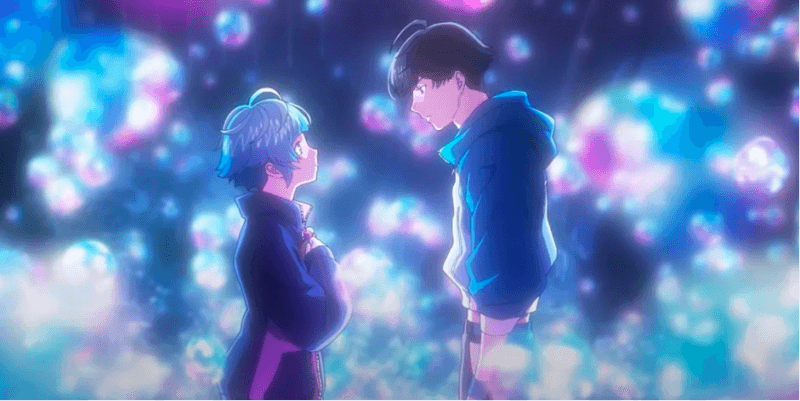Netflix Latest Anime Feature Release: Bubble – Review
Netflix has recently released its newest anime film named Bubble, produced by Wit Studio and spearheaded by Tetsuro Araki, the distinguished Japanese anime director behind classics such as Attack on Titan and Death Note.

Set in a world where a bubble phenomenon completely uproots the laws of gravity in Tokyo, the characters of Bubble traverse this unpredictable landscape through a parkour game called “Tokyo Battlekour”. In this five-on-five game, the objective is to avoid falling into the ocean while racing to capture a flag. The main protagonist is the solitary Hibiki, the most skilled yet reckless member of his Battlekour crew. One day, he almost dies in a precarious situation while pursuing a sound only he can hear. Saved by a girl named Uta, the two quickly bond and find themselves in an increasingly dangerous world.
An engaging premise, Bubble shows no restraint when exploring this unique world and its favourite parkour game. Wit Studio’s mastery of cinematography is on full display here as weightless drone-like shots swerve around the characters twirling in the air. The visual execution of the characters’ flips off the bubbles and Tokyo’s desolate landscape is electrifying.

With stunning establishing shots, Bubble is also able to convey the deterioration and isolation of Tokyo well. Leftover trains, buildings, and the Tokyo Tower scatter the world with remnants of old life. Contrasting hues of blue and red also dominate the film to create some fabulous shots of Hibiki and Uta.
Sound design is also a key strength, with Hiroyuki Sawano fully utilizing an upbeat, fast-paced soundtrack to accompany its dynamic chase scenes that are such a delight to watch. However, it can slow down too, taking its time to listen to key sounds like the peaceful chirp of a bird or splash of a wave.
Despite this visual and auditory success, Bubble loses sight of its original vision as the film continues. As the female protagonist, Uta is plagued by various cliches and struggles to establish depth as little more than Hibiki’s love interest. Similarly, Hibiki lacks charm and originality, with his only unique traits such as his upbringing, being shoehorned too late. As a result, this, unfortunately, makes it difficult for the audience to emotionally invest in their romantic relationship, along with other characters’ shallow personalities and development throughout the film.

Another disappointing shortcoming is Bubble’s storytelling. While its story progression is fairly cohesive, it spends too much time explaining the technical intricacies of every scientific concept in the film: vortexes, the Big Bang, etc. It also ventures too deep into the philosophical end, drawing forced parallels with Hans Andersen’s The Little Mermaid and over-relying on lengthy narration. In the end, it leaves you yearning for a story that is just out of reach.
One particular gripe the audience may have is the ending. With such strong narrative potential, the film’s ending feels overdrawn with extensive flashbacks and confusing imagery, this slow-burn feels strange and incomplete, when the rest of the film has been so active.
Overall, Bubble is certainly a refreshing movie, having a unique premise that initially ignites the viewer with a sense of wonder and curiosity. With such talent powering the visuals and sounds, building the characters that center this thrilling narrative, and grounding the film in more concrete storytelling will only elevate this film. Hopefully, Wit Studio and Tetsuro Araki continue to produce more quality content and substantiate something more memorable in the future than just bubbly drama.


